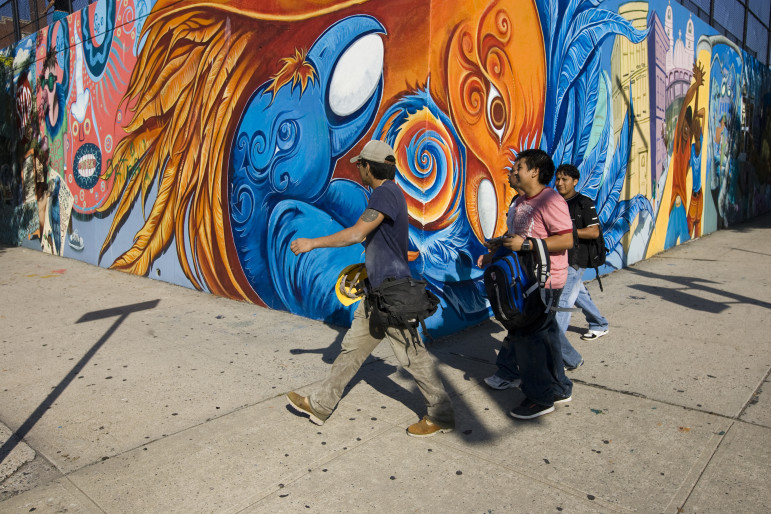
J. Silberberg
Bushwick, 2009
Sitting in the shade of a tree in Maria Hernandez Park on a summer Friday, it can be hard for a visitor to detect what has changed in Bushwick over the past decade.
Now as before, the playground is throbbing with a happy crowd of Latino kids and a few parents. In familiar fashion, a small contingent of drunk guys shelters from the sun near the park’s southeast entrance; their voices rise occasionally but they basically keep to themselves. Some hardy teenagers brave the thick midday humidity and punishing sun on the basketball court. There are three small groups of White people—two young women chatting on a picnic blanket, two women and a man walking though, a reporter and his 8-year-old eating tacos—but the crowd is overwhelmingly Brown, and a little Black. Traffic rolls past along Knickerbocker Avenue toward the mix of chains and independent stores that lies just east. An Italian ice cart rolls in to take the prime spot outside the playground.
It’s the spirit of Bushwick on display in the open space that some might consider the neighborhood’s heart. The community’s fundamental beauty is a powerful thing. It’s almost enough to distract one from the clear signs of change just outside the park’s walls.
A high-rise is shooting up on Willoughby Avenue to the south. A film crew is working on the park’s western side. To the north, a tour guide is showing foreigners (at least, they seem foreign) around the murals that have coated the sides of former industrial buildings. Walk east along Knickerbocker, even far east, and shiny new eateries pop up out of the brown brick landscape.
A bellwether in Brooklyn
Bushwick is changing, rapidly, and not necessarily for the better. Housing pressures on lower-income people have increased. Industrial workspaces are threatened by the development craze. The neighborhood’s character is starting to transform, not through the normal pattern of ethnic succession but because people with more money—who tend to be White—are pushing out people with less.
Ten years ago City Limits decided to evaluate Michael Bloomberg’s first two terms by choosing a single neighborhood and looking closely at the impact of all the mayor’s policies there. We decided to pick the ZIP Code that includes the city’s geographic center: The center is, we were told by City Planning, across the street from Wyckoff Medical Center in 11237. which runs through the heart of Bushwick.
Our 2009 report documented a neighborhood that was beginning a transition—and was already a bellwether for issues that would soon drive headlines across the city (like stop-and-frisk) or around the country, like the erosion of manufacturing employment thanks to trade liberalization. As would soon become a mantra in neighborhoods all over the city, Bushwick residents wondered why new “affordable” housing was priced well above the income level of anyone they knew in the neighborhood.
With a major rezoning looming for Bushwick, it’s time for another deep look. So, over the next four weeks, City Limits’ reporting staff will spend the bulk of its time in Bushwick, looking for stories, interviewing people and distributing information.
In preliminary interviews, it’s the severity of Bushwick’s housing situation is what most concerns local observers.
A housing crunch gets tighter
Data gathered by NYU’s Furman Center show that from 2009 to 2017, the neighborhood’s residential vacancy rate fell from 4.9 percent to 3.7 percent even as the number of units issued new certificates of occupancy soared from 331 in ’09 to 1502 in ’17. The median sales price of a 2-4 unit building leapt from $168,000 to $470,000 and the media contract rent jumped from $961 a month to $1,460. The share of renters who are “rent burdened”–meaning their monthly rent eats up 35 percent of their income or more—is 48.6 percent in Bushwick, higher than Brooklyn’s average.
“New development is rampant along the avenues,: says Scott Short, the CEO of RiseBoro Community Partnership, a major housing and social services agency with deep roots in the neighborhood. “Those new developments, which came to be were referred to as ‘middle-finger buildings’ when they were kind of sticking up in the middle of the block of three-story row-houses and they’re going to six or seven stories, were the visible and tangible indiction of the threat to Bushwick’s cultural heritage.”
By heritage, Short means the buildings and the people who lived in them. In the four ZIP codes that converge in Bushwick – all of which also cover parts of other neighborhoods – there were 2,339 evictions in 2018, according to the City Council’s evictions database. That means about 11 percent of the city’s evictions last year took place in Bushwick and its environs.
The share of apartments on the market that are affordable to households with incomes at 80 percent of the Area Median Income feel from 65.2 percent to 45.5 percent from 2009 to 2017. That’s despite the creation or preservation of more than 1,000 apartments in Bushwick under Mayor de Blasio’s housing plan (257 of which were targeted to moderate- or middle-income households).
Not all the numbers are negative. Bushwick’s foreclosure rate is less than a third what it was a decade ago. The rate of severe housing code violations has been halved. Rates of unemployment and poverty have both declined, even if they still remain higher than the borough-wide rate (Bushwick’s poverty rate is 25.1 percent versus Brooklyn’s 21.6 percent; unemployment is 8.8 percent for the neighborhood and 5.7 percent for the borough.
But from Short’s perspective, nothing erodes the sense of crisis. “We’re definitely seeing more and more doubled up families coming through our doors and we are unable to keep up with the demand even though our legal-services budget has probably close to doubled in the last few years,” he tells City Limits. “We’re turning away cases every single day just because we don’t have the funds to represent all the clients coming through our doors.”
The changing face of Bushwick
The most striking changes in the data might be the demographic indicators. Median income in Bushwick rocketed from $31,780 to $51,620 from 2009 to 2017, as the share of households with children fell from 43 percent to 30 percent. The population share that’s White more than doubled; that of Latinos shrunk from 70 percent to 54 percent.
Yet the neighborhood still has a far higher rate of limited English proficiency (30 percent versus 23 percent) and a lower rate of educational attainment—only 24 percent of residents had a bachelor’s degree or higher, compared with 34 percent–than the rest of Brooklyn.
Taken together, the data points to a tale of two Bushwicks—one White and affluent, the other Latino and struggling with an increasingly dire housing situation. “It’s two populations coexisting,” says Laura Paris, director of arts and literacy for the Coalition for Hispanic Family Services. “It’s very real.”
Paris, who has lived and worked in the area for more than a quarter century, says some of the changes in Bushwick aren’t visible during working hours. “There’s tons of nightlife on the east side but you wouldn’t see it unless you’re there at 2 in the morning,” she says. At night, “practically everywhere you go you’re going to see roving groups of young people looking for the next bar or something. I kind of think it’s known as a party neighborhood.”
Meanwhile, her clients face increased pressure. “Ten years ago, the vast majority of people are doubled up. Now there are a lot of families tripled up,” Paris says. Latino newcomers still arrive because Bushwick is a familiar landing spot, but the flow is more from Central America than Mexico these days—the people primarily rural, some of them not literate in Spanish and more comfortable in an indigenous tongue. The parents work long, odd hours, often in multiple jobs: factory work, restaurant work, collecting cans.
What she has noticed is an “increasing level of trauma,” particularly around experiences during the journey from their homeland to Bushwick. The issue isn’t new but its prevalence and degree are. “This was true 10 years ago,” Paris says. “It’s more true now.”
A rezoning offers rewards and risks
Bushwick’s place in Brooklyn’s fabric, linking gentrified Williamsburg to less-hyped neighborhoods like Brownsville, and the severe housing issues playing out there would make the rezoning under consideration interesting anyhow. The fact that the de Blasio administration’s proposal followed a four-year, locally-generated conversation makes it more so. Bushwick is the rare Brown and Black neighborhood that has had a chance to really set the parameters for a rezoning. Now the question is whether their vision will prevail.
Antonio Reynoso, who along with Council colleague Rafael Espinal launched the Bushwick Community Plan, says the goal is not to freeze the neighborhood as is but simply to give the community that exists a chance to hang on.
“The community’s population is still mostly Latino, which means that the displacement hasn’t happened full stop. A big reason why we want to do this rezoning is so that we can curb speculation. A lot of people think that what these communities are trying to do is stay the same. That’s not necessarily what they want, I think they would invite new residents if it means they still keep their apartments, he says. “Rezoning is not to keep people in their homes per se. It’s not to preserve that. It’s just there for people to control how development happens, and also to stop the speculation.
That will be challenging because, unlike in some of the other neighborhoods that have seen a rezoning, there is very little city-owned land in Bushwick – the kind of territory that might be developed as an antidote to the raging real-estate market.
But the tension in Bushwick is not just between market-rate and truly affordable housing, but also between the thirst for housing and the need to preserve a place for industry.
“Recent statistics show that the majority of the people that work in the manufacturing district in Williamsburg and Bushwick walk or bike to work. So, while we don’t have the exact addresses and know whether or not they’re from the community, we know they’re either walking distance or biking distance, which makes them what we consider our community folks,” Reynoso says. “We want to protect those jobs, and the problem we have is that residential development encroaches on industrial development, and it’s a domino effect. Once they build one building they just keep coming in and coming in. People know you can get a lot more per square foot from a residential building than you can from an industrial building.”
Some of the themes that emerged in City Limits’ 2009 reporting are clearly visible in today’s Bushwick. Perhaps they would be at any time, in any neighborhood – the unending struggle to accommodate working-class people in a city with limited land. But that’s what makes the rezoning discussion so interesting. In 2009, we ended our report with a line from Nicole Marwell, a professor and author. “Yes, things are getting better in Bushwick,” she said. “But maybe that’s because we’ve pushed people off the map. And that’s true for the city as a whole.” The question is whether a rezoning can change that narrative—for a year or two years from now, let alone in another 10.
If you have a story idea or a comment about the neighborhood or our coverage, please let us know. If you want to learn more about the rezoning, text “Rezoning” to 646 916-3930.


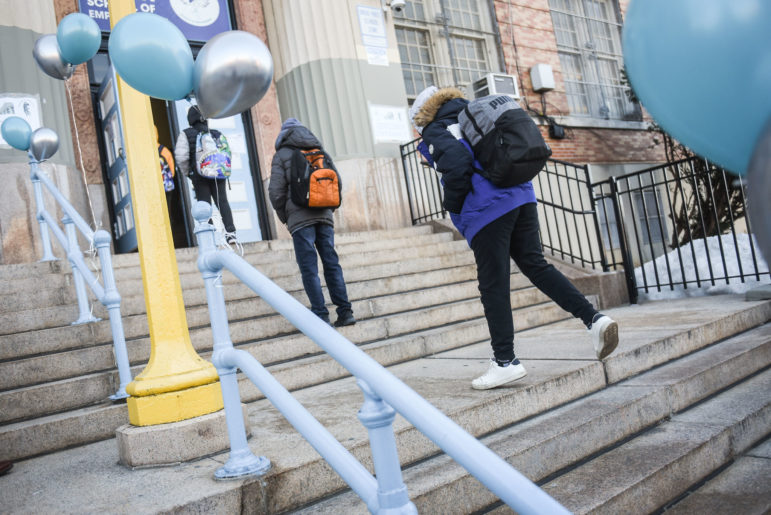
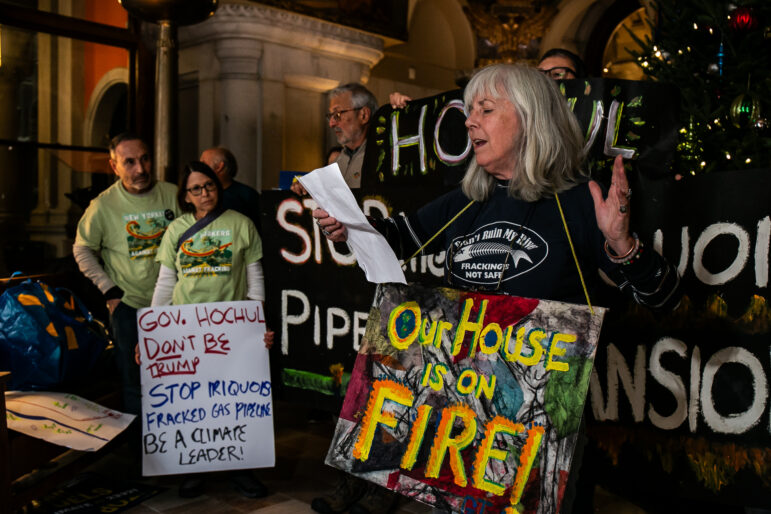
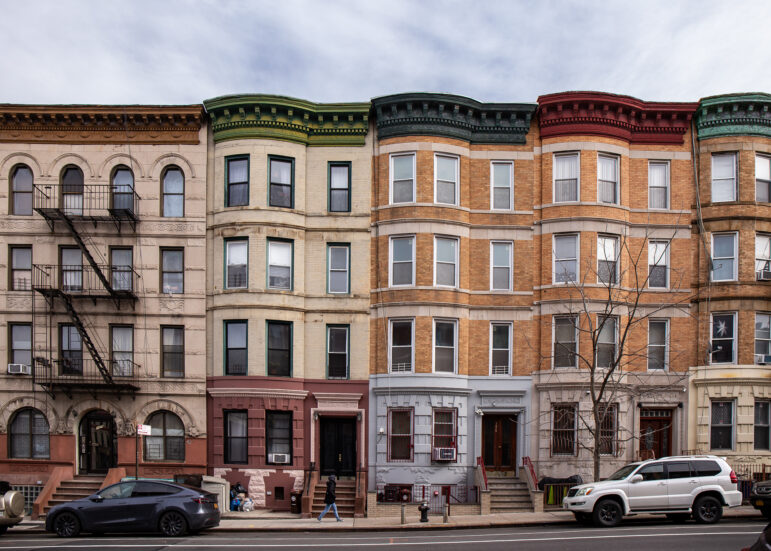
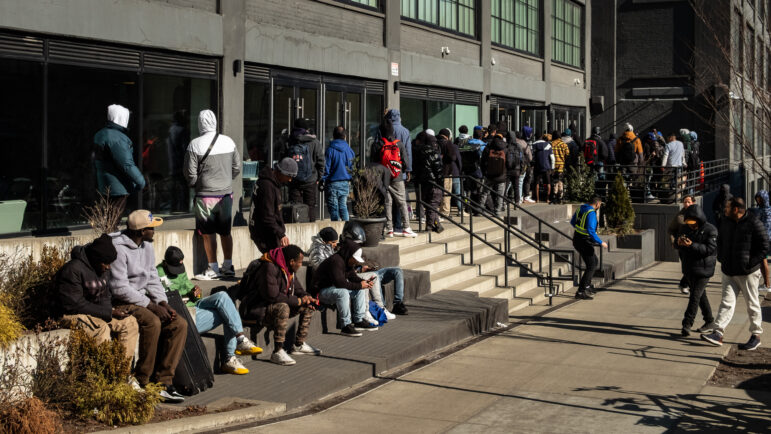
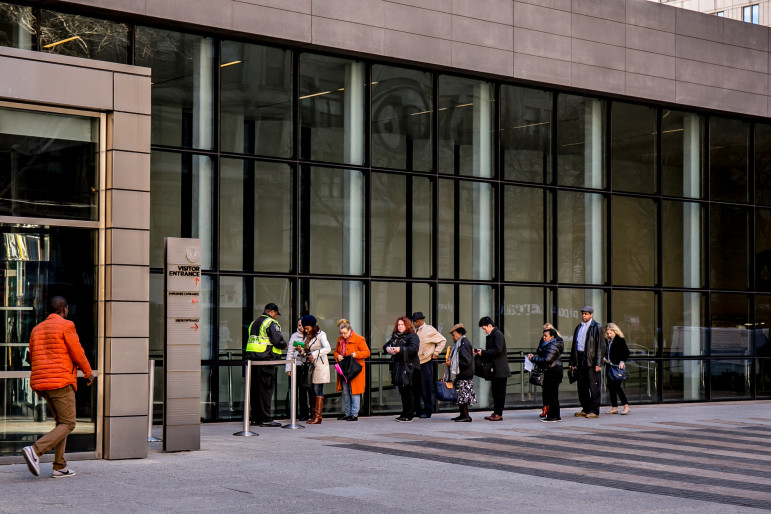


6 thoughts on “Bushwick +10: A Changing Neighborhood Faces a Tighter Housing Crunch”
Oh please. The manufacturing didn’t pick up and go because of “trade liberalization”. Manufacturing left as a result of political choices.
Manufacturing depends on low land values (i.e. cheap rent). The real estate industry, which until the last election cycle ran the city, likes high land values and high rents. “Trade liberalization” didn’t magically rezone North Brooklyn or illegally lease out warehouses zoned for manufacturing for white hipsters to live in; millions of dollars in real estate contributions and lobbying expenses did that. And it happened all under the noses of Vito Lopez, the Dilans, Bloomberg, de Blasio et al.
Yes, trade liberalization is not the only reason industrial businesses came under intense pressure. But it is one reason, and my point was, it is a concern that unites Bushwick with factory towns across the country. The mishandling of land-use decisions affecting manufacturing will be a focus of this series.
Did you survey the demographics before writing “a happy crowd of Latino kids”? Can’t they just be kids? You lost me very early on in this article. The use of race in this conversation is malevolent.
Dramatic demographic change is a feature of gentrification and displacement in many neighborhoods. You can not talk about it, but that doesn’t make it go away.
Is anyone mentioning to Mr. Short “Bushwick’s cultural heritage” included a huge Sicilian population until the mid-late 1980s? Priced out to Glendale!!!! Or the Germans before them? Someone forgot to tell Circo’s Pastry shop to become a mofungo spot. It’s amazing to see people clinging to the idea that a racist New York as a reason why they are getting priced out. Living here for generations and your family doesn’t own a home, you should blame your parents. You live 5 miles from Wall Street. People from the Middle East come here and sell peanuts and scratch together enough to buy a house in Corona. And the real scope of the conversation is manufacturing zoned land being held as manufacturing for the locals when those jobs don’t hold up to the rents. So what if they are rezoned? It will help the cause of stopping displacement. But forget that argument. We need to keep these little slivers of industrial wasteland even though the IBZ of East williamsburg is gigantic and totally insulated from M to R rezoning. Maybe Reynoso should promote people becoming doctors and lawyers instead of welders and carpenters. But forget me man, I’m white and everyday is a vacation for me. I was handed everything I ever wanted and never had to work a day in my life. What a gross perspective to walk through the world with. Grow up. It’s not anyone’s fault. Cities change. Neighborhoods change. Displacement. I haven’t had much “placement” in my life so this entire diatribe seems childish.
white kids are usually unhappy, even if they have things handed to them. budism said desire is the cause of all sufering